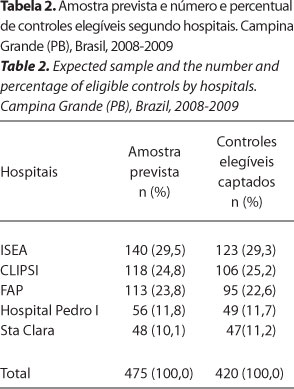INTRODUCTION: The prevalence of preterm birth has increased in recent years and it is currently a worldwide public health problem. In any epidemiological study, the greatest challenge facing the study of preterm delivery is to standardize the measurement of gestational age births. OBJECTIVE: To describe the methods used to define the sample under study and selection of events in case-control studies of risk factors for preterm birth in hospital births by mothers living in the city of Campina Grande (PB), Brazil. METHODS: The design was a case-control population-based, which was conducted from June 2008 to May 2009. The cases were born at less than 37 weeks of gestation and controls at 37 weeks or more. Gestational age in weeks was defined using selection criteria based on the accuracy of the estimate. Interviews were conducted with mothers and collection of hospital records. RESULTS: It was selected 341 cases and 424 controls, 13.19% were classified as extremely preterm (<28 weeks), 34.87% as very preterm (<33 weeks) and 65.10% as moderate preterm (33 to 36 weeks of gestation). Among controls, the percent of children born 37-39 weeks was 58.02 to 5.90% was born post term (>42 weeks). CONCLUSION: The strategies shown to be viable, even in a context with major limitations in obtaining the necessary information, given that the profile of preterm infants, the distribution of gestational age were comparable to studies with more accurate methods.
gestational age; pregnancy; pretermature birth; data sources; data collection; case-control studies





